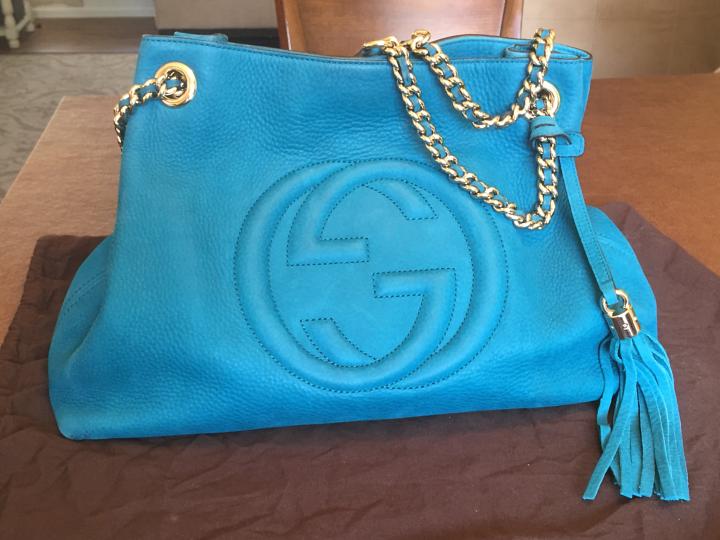We live in an instant gratification society, and it’s ruining our value system. After making a purchase, I would enjoy the item thoroughly for a week or so and then become either dissatisfied or bored with it and consider what I should buy next. This was the case for small and large purchases. I approached my material acquisitions like they were a goal. I thought, “OK, I have this item, what else is on my wish list?”
Thinking like this diminished my appreciation for what I have. Rather than being in the present with my belongings, I was constantly looking at what I didn’t have and living in the future. This was a source of discomfort because I always felt like I was lacking something. Which is a complete shame because I own many wonderful things.
About a year ago my problematic thinking became so apparent that I was compelled to change. I bought a beautiful Gucci handbag. I’m telling you, this bag has the brightest blue and softest nubuck leather. Gorgeous! I bought it pre-loved (which is my way of saying used) and was thrilled when I received it. That lasted for a week, and then two things happened.
First I became dissatisfied with the bag because it didn’t properly fit with my lifestyle. With a baby and toddler, what was I thinking buying a handbag that could so easily scuff? Also, living near the mountains we have regular afternoon rainstorms – which would watermark the untreated leather. For fear of ruining this amazing bag, I relegated it to the closet.
Next, with it neatly tucked away, I began thinking of how I could replace it. It seemed rational at the time, but really?!? Do you all see how asinine this is? I purchased a pre-loved bag for more than I care to admit and within a couple of weeks was shopping around for another one! I bought my Gucci with cash I saved from my monthly fun money. With that “money” now sitting in the closet, I considered using a credit card to get a different bag that I would actually use. This line of thinking is dangerous and stupid.
I’m lucky I needed credit to buy the second bag, because that is what stopped me. I had already decided luxuries should only be bought with cash. But what if I had the extra money laying around? I would have gotten the second handbag, I’m sure of it. This would have extended my sense of entitlement, and who knows what other purchases I would have justified. It’s ridiculous.
Thinking about how I acted, works me up. I fell into a trap that I think most Americans (maybe all first world countries?) are in. We have been taught, through sophisticated marketing, that we deserve fancy material items and that we need to display wealth. We’re encouraged to “keep up with the Jones’s.” Who are these Jones’s, and more importantly, how are they paying for their things? With the median household income of about $53,000 in the US, I suspect they are buying most of it on credit. Are we competing for who has the nicest life, or who has dug out the biggest money pit? It’s a fair question we should all consider.
OK, I’ll get off that soapbox and tell you how I overcame my instant gratification problem. I used the following 3 steps before making a purchase.
- Ask myself if the purchase is practical. I don’t want to spend money on items I can’t or won’t use. I also consider if anything I already own would meet the need or desire I’m trying to fill.
- Ask myself if the new item will spark joy. In other words, will I still get a thrill from it 3 or 6 months down the road? I opt to not buy whenever I think it will come with buyer’s remorse or will feel incongruent with who I am and want to be.
- For purchases more than $350, I mentally test drive the item. This is especially helpful for handbags, luxury accessories, and expensive toys. I imagine myself using the item in everyday life. I also scour the web for images of people using or wearing the item. I find their feedback and try to decide if their feedback applies to me too. I know this sounds weird, but I’ll carry this on for months. I think of it as a developing love affair with the item. If the excitement continues to build, I know I’m headed for a purchase I’ll appreciate. On the other hand, if my imaginary love affair fizzles, I am grateful I never took the plunge.
Learning to delay gratification helped me to better live one of the mantras I’m teaching my kids – buy less, buy better. Combining this with the philosophy that “if you take care of your things, they will take care of you” has helped me to discard what I don’t value and more fully love what I do value.
Let me know the techniques you use to delay gratification. Don’t forget to like and share!




One Comment